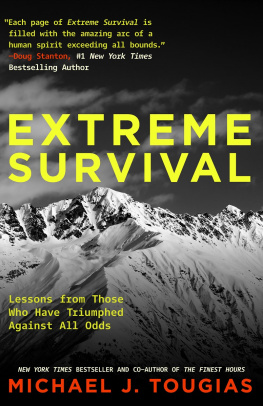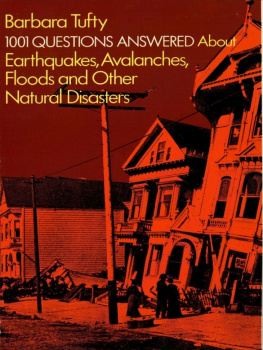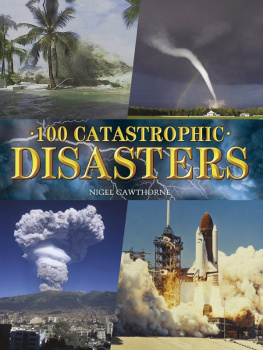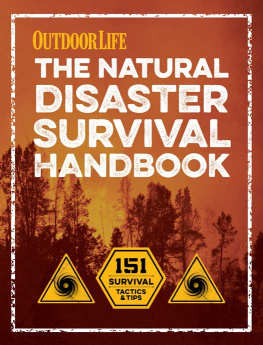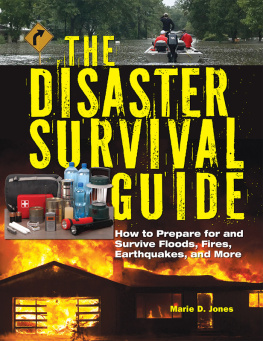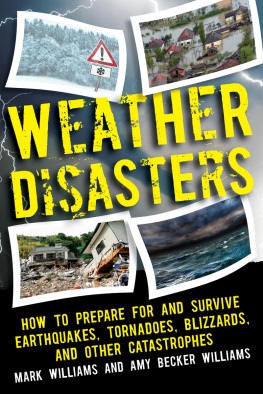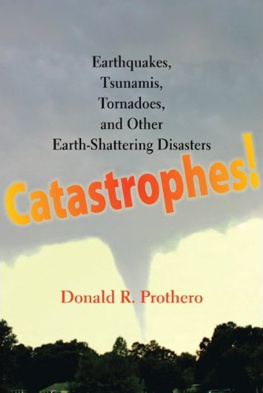13.
INTRODUCTION
E verybody's life is touched at some time by disaster. It could be something as temporary as the loss of a big game or an initial failure to achieve a desired goal. Or it can be something as deeply felt and permanent as the death of a loved one. There are some disasters, however, that are felt universally. These are the disasters that leave us shocked and sometimes angry and that move us to do something to help, even if we do not live in the places where they have occurred, nor personally know any of the people involved. Almost everyone who heard of the events had an emotional reaction to the destruction wrought by Hurricane Katrina, the devastation caused by a tsunami in Southeast Asia, and the brutal terrorist acts of September 11, 2001. In each instance, millions of people responded to the call for aid.
Some disasters are natural: an earthquake or a hurricane strikes a populated area. Some disasters are man-made: a dropped match starts a deadly fire in a building full of people. War, too, is a man-made disaster. Many disasters are a combination of both. A flood caused by a violent storm is certainly natural. But if death and property damage result because a poorly constructed dam breaks, then there is also a human contribution.
Nobody can prevent natural phenomena such as hurricanes, earthquakes, and volcanic eruptions. But unlike our ancestors, we have the technology to predict them with at least some degree of accuracy, and can be prepared for them. Buildings in earthquake-prone regions are constructed to resist tremors. People are evacuated from the path of a hurricane.
Man-made disasters are almost always preventable. They are usually the result of shortsightedness, stupidity, or greed. A movie-house owner overcrowds his establishment and ignores fire safety regulations. A man-made reservoir is filled beyond the limits of safety so that a privileged few can enjoy sailing. A mining company sends underpaid boys underground in order to maximize profits.
All of the disaster stories presented in this volume focus upon the young people who were involved. Some of them were heroes. Others had miraculous escapes. All, in one way or another, were victims; sometimes of the elements; sometimes of human exploitation. While all of these stories tell of historical disasters, we, the first people of the twenty-first century, must bear in mind that the conditions that spawned them are still with us. Children in Third World countries still work under conditions like those of the Triangle Shirtwaist Factory, and the products of their toil are sold in our stores. Many nations do not have the economies to construct defenses against natural calamities. Scientists have warned that the effects of global warming are already wreaking havoc with planet Earth. There are still measures that must be taken so that tragedies such as those described in these chapters might be reduced in impact, or even prevented.

Today, many people regard the waters and shores of North America's Great Lakes as summer vacation playgrounds, but in the nineteenth century the five linked lakes were the continent's principal transportation route. Roads were rough and traveling them was painfully slow. Railroads were still in their infancy, especially on the rugged north shores of the lakes. The most convenient way to move people and goods was by water. Every year millions of tons of farm produce, timber, ore, and manufactured goods as well as thousands of passengers crossed these inland seas in sailing vessels and steamboats.
Saltwater sailors tended to look down their noses at the freshwater sailors of the Great Lakes. Compared to the vast oceans they sailed, these old salts considered the lakes mere puddles. They changed their tune when they had to navigate the puddles of Lake Ontario, Erie, Huron, Michigan, or Superior, though. These confined bodies of water were often a mariner's nightmare. Tricky crosswinds could turn a routine voyage into a life and death struggle. Storms blew up with a suddenness that astonished even the most experienced of sailors. There wasn't much room to maneuver a ship in bad weather and the lakes were mostly uncharted. A gauntlet of reefs and shoals lurked beneath the waves, ready to tear the bottoms out of ships. Still, if you wanted to go from Duluth, Minnesota, say, to Kingston, Ontario, there was really only one way. And maybe the weather would be fair all the way. Maybe!

Seventeen-year-old Christy Ann Morrison was feeling seasick the morning of Thursday, September 14, 1882, as the passenger steamer Asia pitched and rolled in the rough waters of Georgian Bay, the huge extension of Lake Huron that is almost as big as Lake Ontario. Christy was too ill to eat breakfast. She recalled the old saying about seasickness: First you feel like you're going to die, then you wish you would. She must also have heard that it was better to stay out in the open air than below in a bunk, because Christy remained on deck. Her cabin mates were also seasick, but had stayed in their bunks. They were suffering miserably as the ship rose and fell on the angry waters. Christy could not have known as she fought down nausea that she was about to endure an ordeal much worse than seasickness.
The Asia was a large steamer, approximately 136 feet (41.5 m) long and 23 feet (7 m) in the beam (the widest part of the deck). Though she had been in service for nine years, the Asia had not been built for the open water of the Great Lakes, but was actually of riverboat design. Officially she was allowed to carry no more than forty passengers, in addition to a crew of twenty-four. On that fateful September day there were more than 100 passengers crowded aboard the ship.
The Asia's skipper, John N. Savage, had been sailing the Great Lakes for twelve years, but he'd been a captain for only one year. Two months earlier, the ship's owners had sent Captain Savage a letter giving him strict orders to keep his vessel in shelter whenever the weather was bad. Perhaps Captain Savage did not fully understand these instructions. Some people claimed that he was illiterate.
On September 13 the Asia had already encountered rough weather. One passenger later reported hearing cracking sounds as if she were being torn assunder and then a loud report as if the vessel had burst in two. When they put in to the harbor at the town of Owen Sound, a steamboat inspector examined the Asia and told Captain Savage,. she'll never get to French River, as she is strained. The captain argued with the inspector and dismissed the warning. Moments later, Christy Ann Morrison boarded the Asia, bound for Sault Ste. Marie. She had every expectation of a safe journey. After all, her cousin John McDonald was First Mate.
Also on board the Asia as it sailed from Owen Sound at about midnight was Douglas Albert Tinkis, 18, who was traveling with his uncle, J.H. Tinkis. In all likelihood the boy and his uncle were returning to their home on Manitoulin Island after a visit to Owen Sound.


